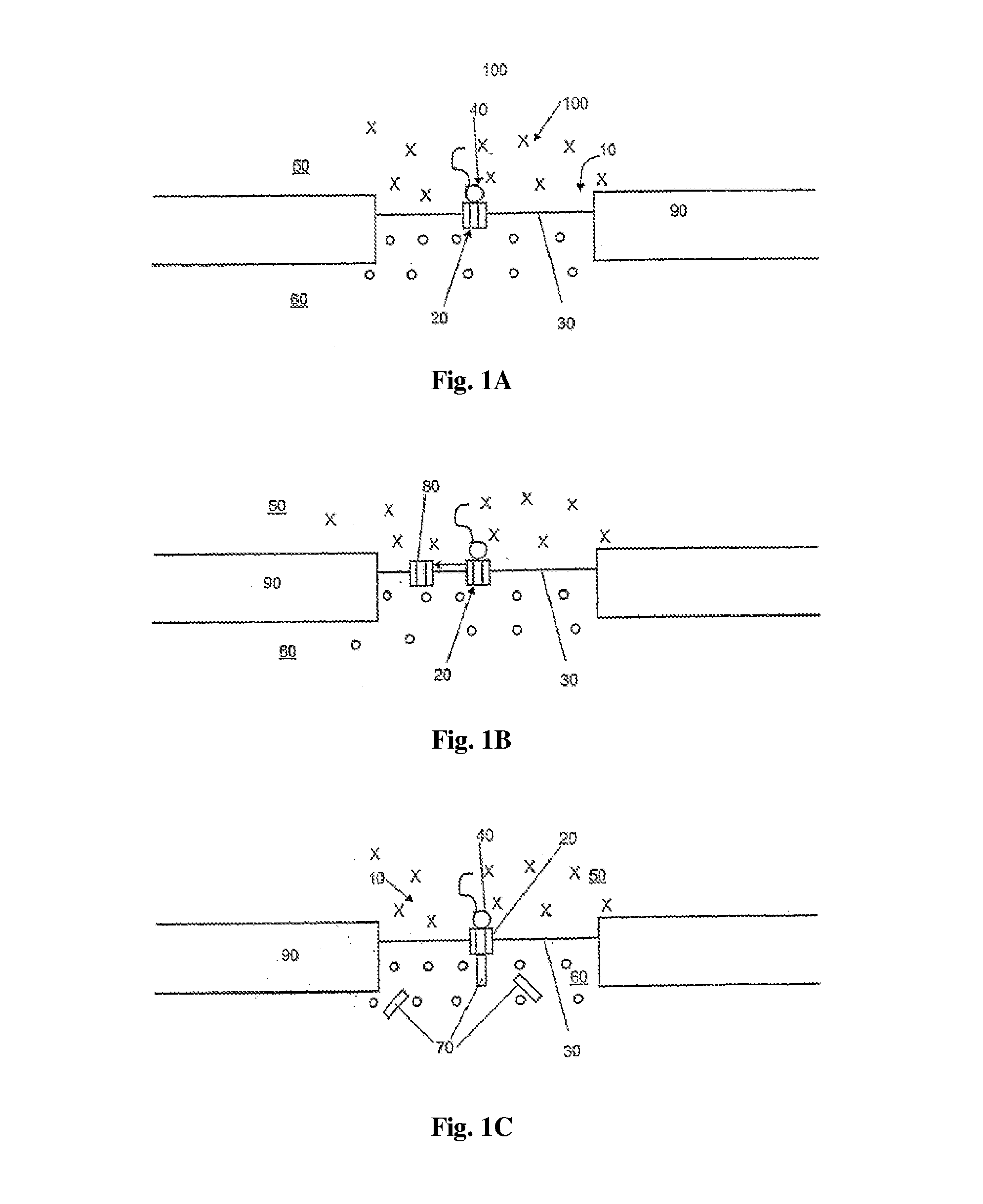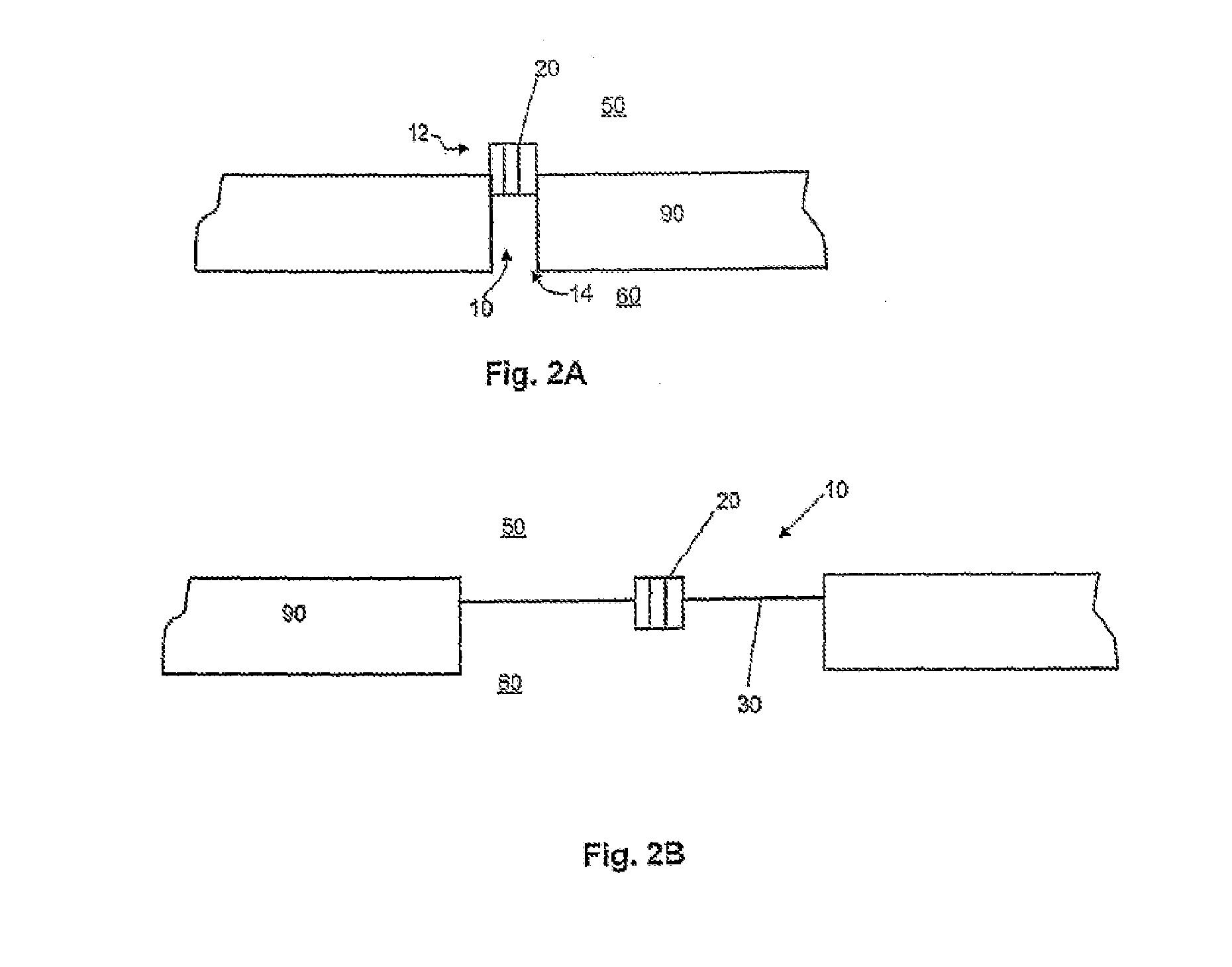Device and method for cell free analytical and preparative protein synthesis
a cell-free and protein-free technology, applied in the field of biotechnology and molecular biology, can solve the problems of low efficiency with which proteins of desired functionality are prepared, undesirable protein production of cytosolic extracts, and reaction to subside, and achieve high purity
- Summary
- Abstract
- Description
- Claims
- Application Information
AI Technical Summary
Benefits of technology
Problems solved by technology
Method used
Image
Examples
Embodiment Construction
[0040]The basis of the invention is a pore 10 as shown in FIG. 1 which is closed by a translocation system 20. The translocation system 20 can be incorporated into a bimolecular lipid membrane 30. The translocation system 20 may be coupled with a translation system 40 by which specific proteins 70 can be prepared. By the translocation system 20, the proteins 70 produced are either incorporated into the membrane 30 as shown in FIG. 1a or conveyed across the membrane as shown in FIG. 1b. One example of a combination of translation system 40 and translocation system 20 is the complex consisting of ribosomes in the act of beginning with the synthesis of a protein (ribosome / nascent chain complex) and the Sec61 complex. The correct folding of the newly synthesized proteins 70 requires chaperones 60. The translocation can be effected either during the synthesis, i.e., cotranslationally, as shown in FIG. 1, or after completion of the synthesis, i.e., posttranslationally. In this case, the f...
PUM
| Property | Measurement | Unit |
|---|---|---|
| diameter | aaaaa | aaaaa |
| size | aaaaa | aaaaa |
| depths | aaaaa | aaaaa |
Abstract
Description
Claims
Application Information
 Login to View More
Login to View More - R&D
- Intellectual Property
- Life Sciences
- Materials
- Tech Scout
- Unparalleled Data Quality
- Higher Quality Content
- 60% Fewer Hallucinations
Browse by: Latest US Patents, China's latest patents, Technical Efficacy Thesaurus, Application Domain, Technology Topic, Popular Technical Reports.
© 2025 PatSnap. All rights reserved.Legal|Privacy policy|Modern Slavery Act Transparency Statement|Sitemap|About US| Contact US: help@patsnap.com



